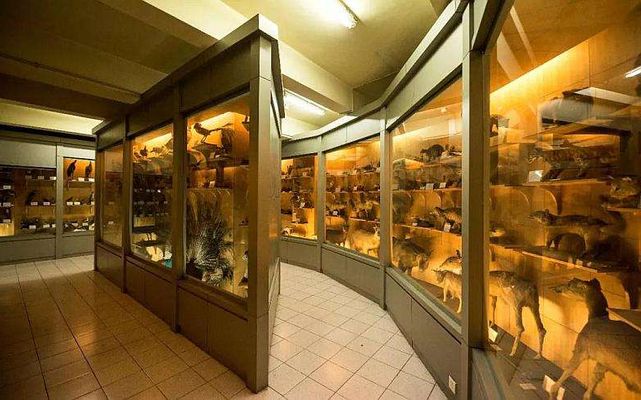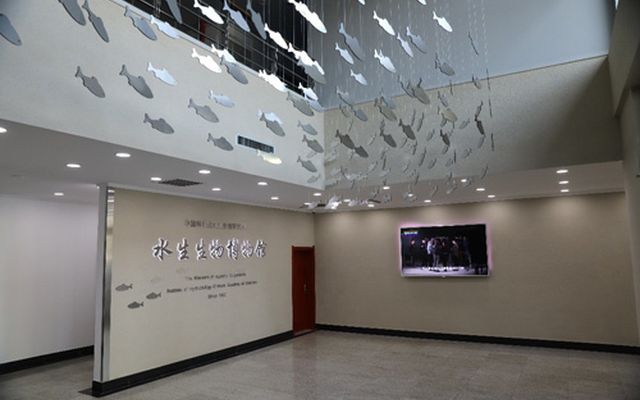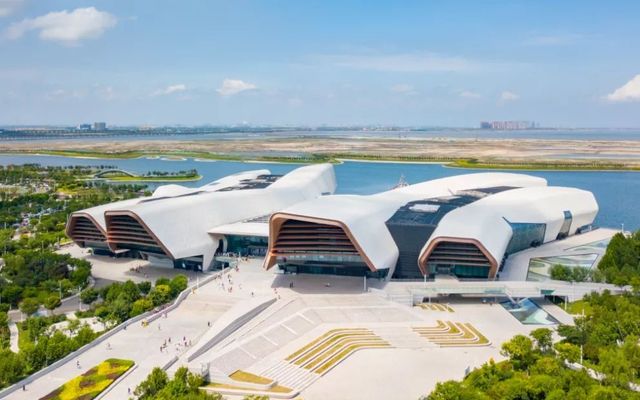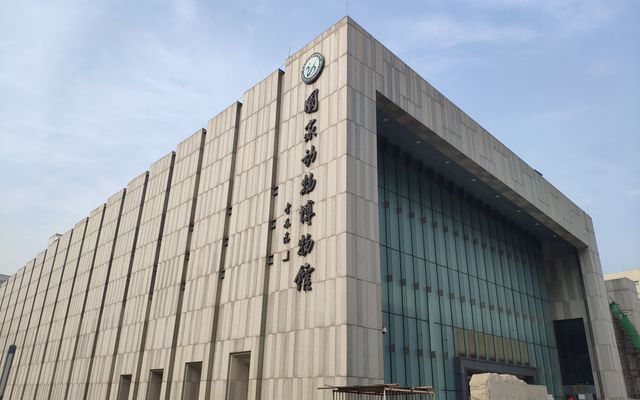The biological museum integrates exhibition, collection, research and education, showing the mysteries of natural science, and is also an important educational practice base. There are various types of biological museums all over China, and the collections in these venues are also different. This post will introduce you to the top ten biological museums in China.
1. Biological Museum of Sun Yat-sen University 中山大学生物博物馆

Address: No. 135, Xingang West Road, Haizhu District, Guangzhou City, Guangdong Province
2. Chinese Academy of Sciences Aquatic Biology Museum 中科院水生生物博物馆

Address: No. 7, East South South Road, Wuchang, Wuhan City, Hubei Province
3. National Maritime Museum 国家海洋博物馆

Address: No. 377 Haixuan Road, Sino-Singapore Eco-city, Binhai New Area, Tianjin
4. National Zoological Museum 国家动物博物馆

Address: No. 5, Yard 1, Beichen West Road, Chaoyang District, Beijing
5. National Botanical Museum 国家植物博物馆
The National Botanical Museum is a comprehensive large-scale plant-specific biological museum that combines the exhibition of traditional museums with the collection, display and research of living plants, traditional culture and the big health industry. On October 11, 2018, it was learned from the 16th National Congress of the Botanical Society of China and the 85th Anniversary Academic Annual Meeting that Kunming City has determined the location of the National Botanical Museum, and it will be located in Ciba, Panlong District, Kunming City. area. Kunming has more than 1,200 species of wild plants and more than 460 species of flowers. The output value of flowers has ranked first in the country for 20 consecutive years. The National Botanical Museum is currently under construction and will become the largest botanical museum in China when completed.
Address: Ciba Area, Panlong District, Kunming City, Yunnan Province
6. Kunming Zoological Museum 昆明动物博物馆
Kunming Zoological Museum is located in the park of Kunming Institute of Zoology, Chinese Academy of Sciences, No. 32 Jiaochang East Road, Kunming City, Yunnan Province. . The museum has a building area of 7,350 square meters. It now houses more than 800,000 animal specimens of various types of animals, birds, amphibians and reptiles, fish, and insects. Covering all animal species specimens in Yunnan and surrounding areas, rare and endangered species account for a few, it is the largest and most distinctive animal thematic biological museum in Southwest China.
Address: Wuhua District, Kunming City, Yunnan Province
7. Biological Museum of Xiamen University 厦门大学生物博物馆
The history of the Biological Museum of Xiamen University can be traced back to 1922. Its predecessor was the taxidermy of the School of Life Sciences of Xiamen University. Today, the museum covers a total area of 5,600 square meters and has many species of creatures, covering almost all categories of the animal kingdom, including vertebrates, invertebrates, protozoa, etc. There are more than 100 species and more than 3,000 pieces. Some of these specimens have been preserved for more than 90 years, and there are also some rare and endangered animals, such as South China tigers, Siberian tigers, leopards, giant pandas, red-crowned cranes, pythons, giant salamanders, etc.
8. Guangxi Normal University Biodiversity Museum 广西师大生物多样性博物馆
The history of Guangxi Normal University Biodiversity Museum can be traced back to 1959. It was formerly the Biodiversity Herbarium of Yucai Campus. In 2017, it moved to Yanshan Campus and changed its name. The museum has nearly 10,000 wild animal and plant specimens and model specimens collected from all over the world, including mammals, birds, reptiles, amphibians, fish and other vertebrates, as well as insects, mollusks and other invertebrates , Plant specimens include bryophytes, algae, gymnosperms and angiosperms. It contains hundreds of internationally endangered species and national first- and second-level protected animals and plants.
9. Qinba Biological Museum 秦巴生物博物馆
Qinba Biological Museum is located in Shaanxi University of Science and Technology. The museum focuses on the biological resources of Qinba Mountains, including biology, botany, zoology, etc., involving many kinds of animals and plants, such as invertebrates, fish, amphibians, etc. , reptiles, birds and mammals. The museum displays representative species of various phyla, classes and purposes of the animal kingdom, sorted from low to high, and is equipped with various ecological scenery boxes, which not only reflect the process of biological evolution, but also show their respective characteristics and habits. Among them, “giant panda, golden monkey, takin, crested ibis”, the four treasures of Hanzhong, are the characteristic biological specimens.
10. Hainan Normal University Biodiversity Museum 海南师院生物多样性博物馆
The Biodiversity Museum of Hainan Normal University is the first natural science museum in Hainan Province that integrates science and fun. There are 48 themed units in the museum, with more than 7,000 collections. Among the unique biodiversity resources in the museum, the most distinctive is the marine animal exhibition in the South China Sea. The number and rarity of giant whale bones and internal organs are The best in the country. In addition to animals, there are also exhibitions about human evolution, which fully demonstrate the historical changes in the relationship between man and nature, the origin of human beings, human body structure, adolescent boys and girls, etc.
See Also: Top 10 Dinosaur Fossil Museums in China
[…] The Forbidden City in Beijing is the royal palace of the Ming and Qing dynasties in China. It used to be called the Forbidden City and is located in the center of the central axis of Beijing. The Forbidden City in Beijing is centered on three main halls, covering an area of about 720,000 square meters, with a construction area of about 150,000 square meters. There are more than 70 palaces of different sizes and more than 9,000 houses. The Beijing Forbidden City began construction in the fourth year of Yongle (1406), Emperor Chengzu of the Ming Dynasty. It was built on the basis of the Nanjing Forbidden City. It was completed in the eighteenth year of Yongle (1420) and became the palace of 24 emperors in the Ming and Qing dynasties. On the National Day of the 14th year of the Republic of China (October 10, 1925), the Palace Museum was officially established and opened. The Forbidden City in Beijing is 961 meters long from north to south and 753 meters wide from east to west. It is surrounded by 10-meter-high walls and a 52-meter-wide moat outside the city. There are four gates in the Forbidden City, the Meridian Gate in the south, the Shenwu Gate in the north, the Donghua Gate in the east and the Xihua Gate in the west. Each of the four corners of the city wall has a graceful turret. There is a folk saying that there are nine beams, eighteen pillars and seventy-two ridges, which describe the complexity of its structure. The buildings in the Forbidden City in Beijing are divided into two parts: the outer court and the inner court. The center of the Outer Dynasty is the Hall of Supreme Harmony, the Hall of Central Harmony, and the Hall of Preserving Harmony, collectively referred to as the Three Great Halls, where the state holds grand ceremonies. The left and right wings of the three halls are supplemented by two groups of buildings, the Wenhua Hall and the Wuying Hall. The center of the inner court is Qianqing Palace, Jiaotai Palace, and Kunning Palace, collectively referred to as the Housan Palace, which is the main palace where the emperor and empress live. Then there is the Royal Garden. On both sides of the Housan Palace are the East and West Sixth Palaces, which are the places where the concubines live and rest. On the east side of the East Sixth Palace is the Tianqiong Palace and other Buddhist temple buildings, and on the west side of the West Sixth Palace is the Zhongzheng Hall and other Buddhist temple buildings. In addition to the Outer Dynasty and the Inner Court, there are two parts of the Outer East Road and the Outer West Road. […]